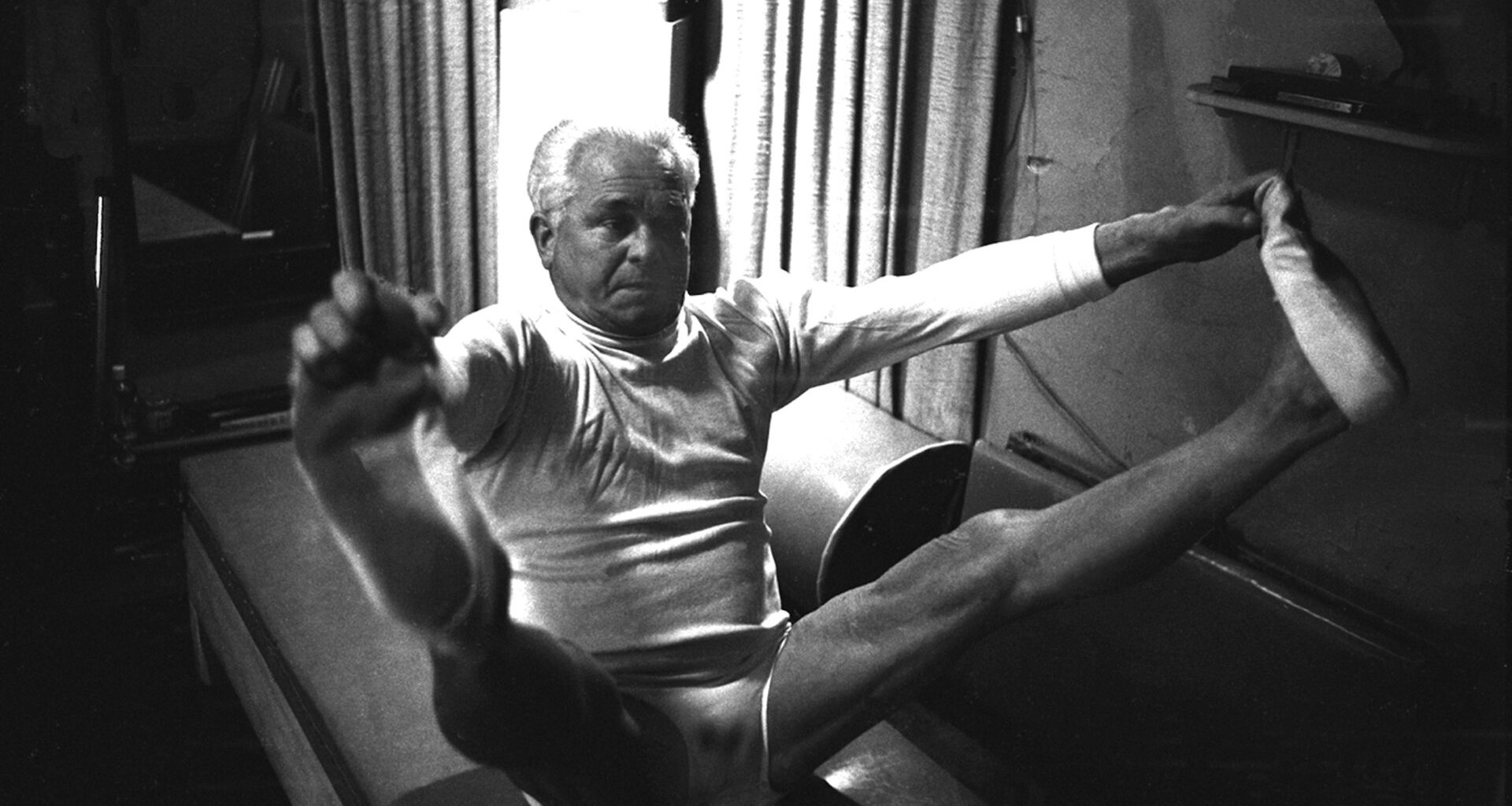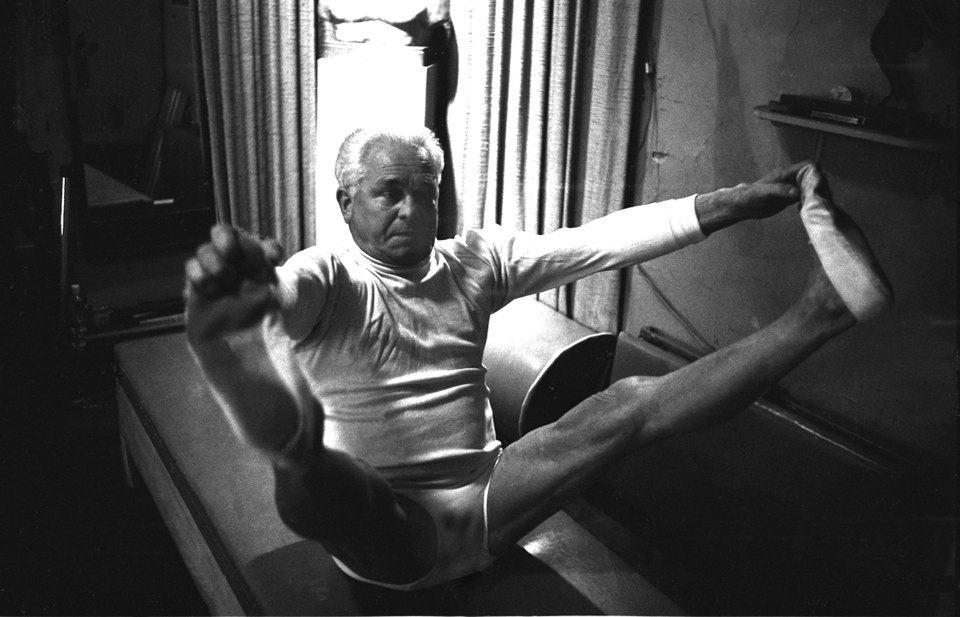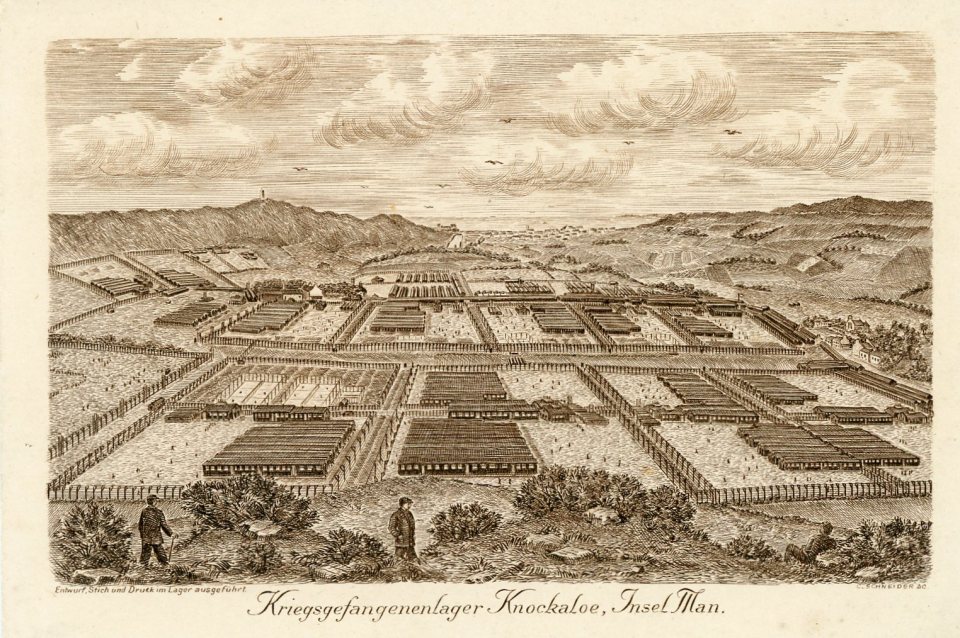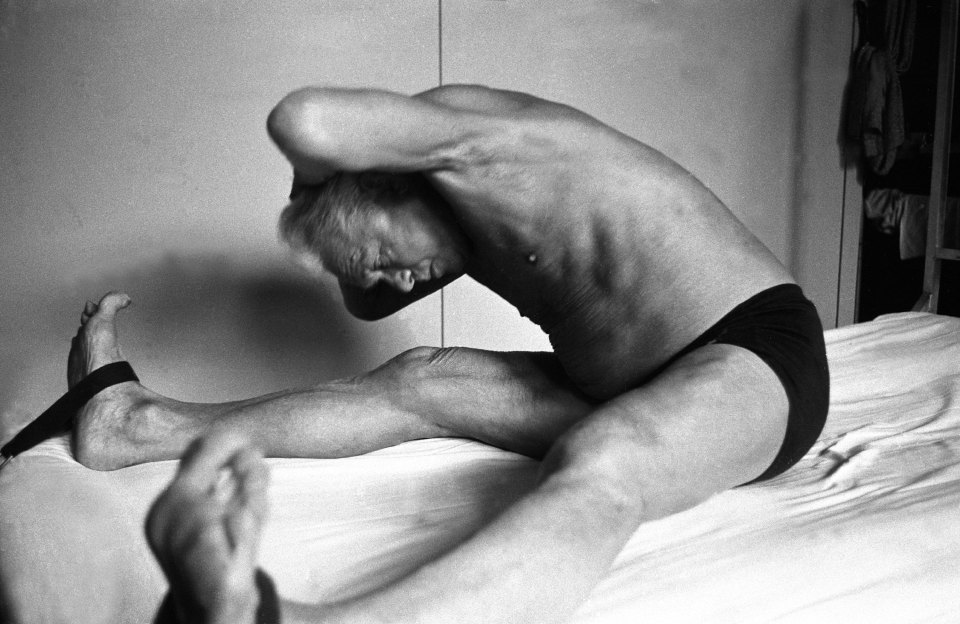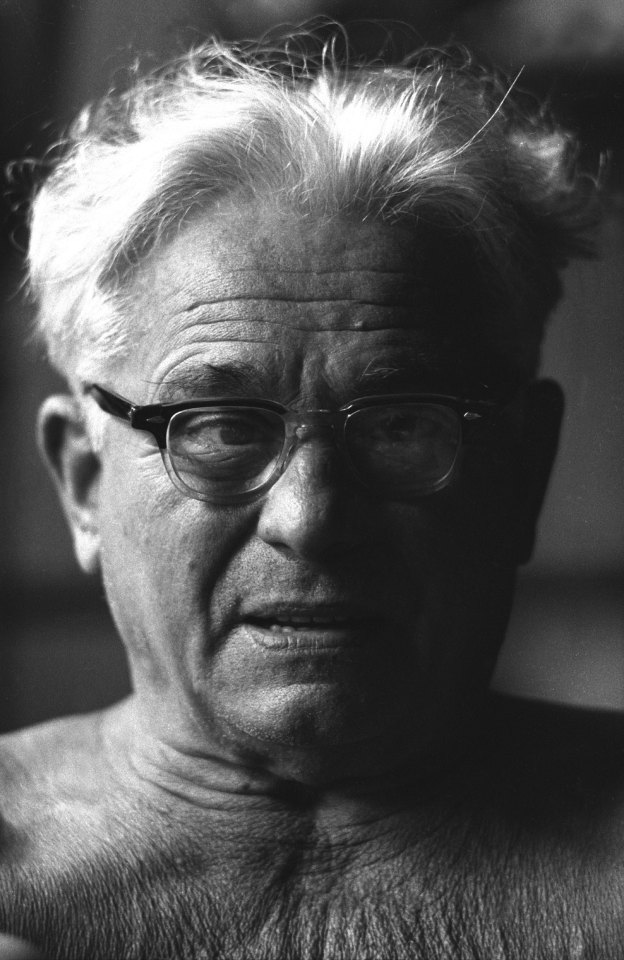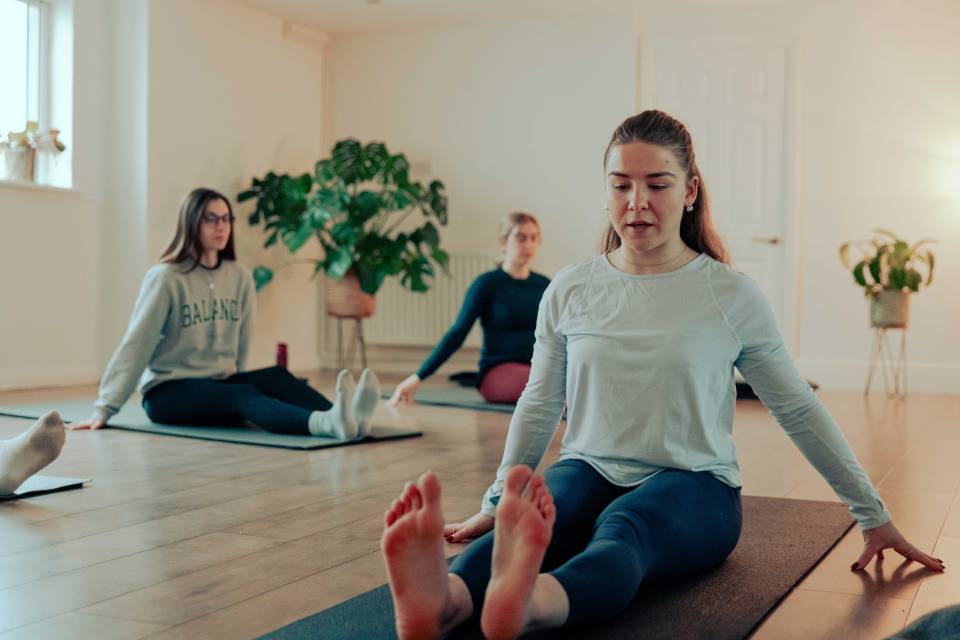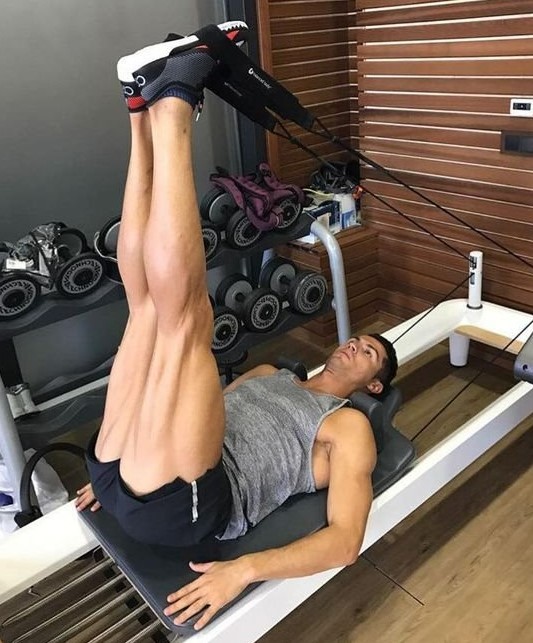IT’S loved by celebrities, yummy mummies and Instagram influencers alike.
But Pilates hasn’t always been about the latest lycra sets, colour-coordinated water bottles and racking up ‘likes’.
26
Joseph Pilates, who invented the exercise method during WW1Credit: Getty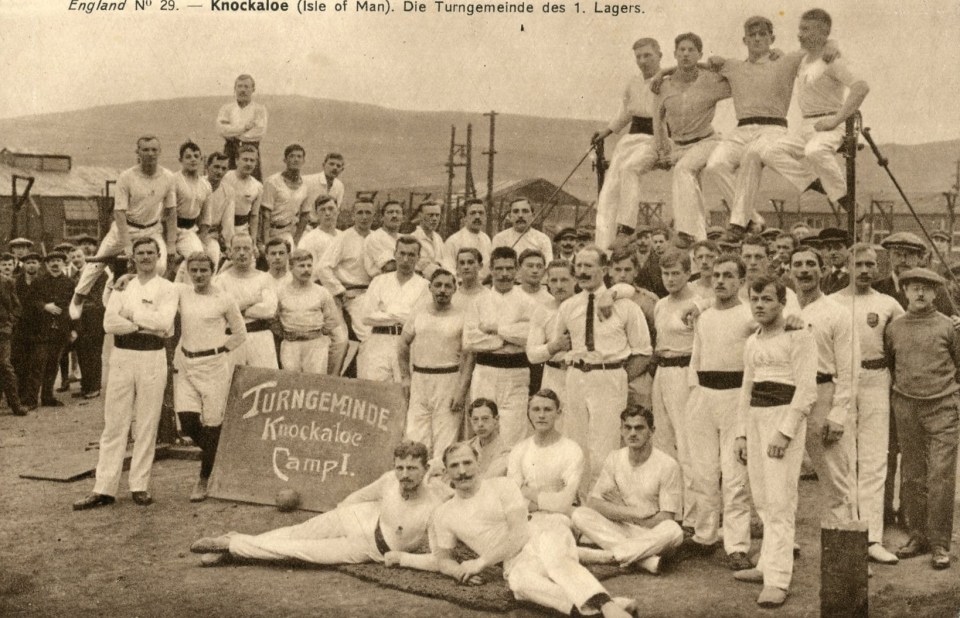
26
German gymnastics team at Knockaloe Internment Camp on the Isle of ManCredit: www.knockaloe.im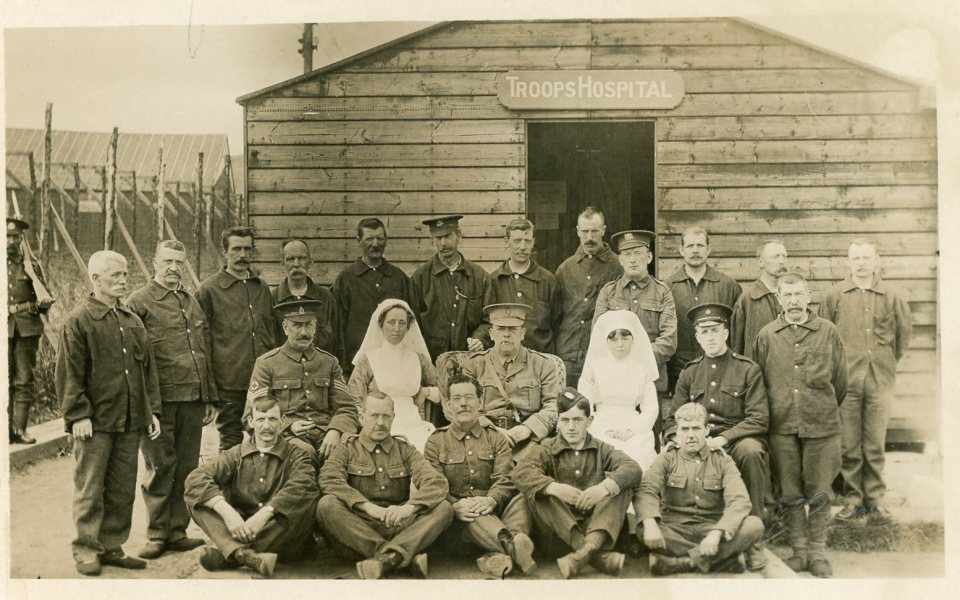
26
Military men outside the Troops Hospital at Knockaloe, where Joseph was internedCredit: www.knockaloe.im
In fact, the exercise – which focuses on balance, posture, strength and flexibility – has a dark history.
The concept of Pilates was conceived by Joseph Pilates while interned as a German “enemy alien” during World War One.
The former boxer, skier, diver and gymnast believed in “contrology” – developing control over the body through mindful movement, and the idea that exercising it entirely, as opposed to training individual muscles separately, was the best way to achieve good health.
While working as a nurse at Knockaloe prison camp on the Isle of Man, he experimented with attaching springs to hospital beds so that patients could exercise their muscles during treatment.
This formed the basis of what we know today as reformer Pilates.
After his release, Joseph returned to Germany before moving to the United States, where he opened a fitness studio with his wife Clara Zeuner.
There, they helped train young dancers at the New York City Ballet.
Several other studios opened, and soon Hollywood discovered Pilates, followed by the masses.
Throughout his life, Joseph developed more than 600 exercises for the mat, as well as various apparatus. Many are still around today.
“The Pilates method of body conditioning develops the body uniformly, corrects posture, restores vitality, invigorates the mind and elevates the spirit,” he wrote in 1945.
Inside the cat-inspired ‘WW1 prison workout’ that’s loved by celebs and promises a ‘new body in 30 days’
“In 10 sessions you’ll feel the difference, in 20 you’ll see the difference, and in 30 you’ll have a new body.”
Here, we take a look at Joseph’s life, philosophy and lasting impact.
THE EARLY YEARS
JOSEPH was born in 1883 in Mönchengladbach, Germany, to a working-class family.
“His early years were shaped by both hardship and strength,” Alison Jones, researcher and Knockaloe Isle of Man trustee, tells Sun Health.
“His father was a metalworker who worked long hours. His mother’s interest in natural medicine may well have sparked his own lifelong interest in holistic approaches to health.”
As a child, Joseph suffered from asthma, rickets and rheumatic fever, but reports suggest gymnastics and boxing kept him healthy.
“He transformed his weaker body into one of strength, which would later deeply inform his teachings,” Alison says.
LIFE AT KNOCKALOE
HE left Germany for England, where he taught self-defence and found work as an acrobat in the circus.
But when WW1 broke out, he was interned as a German “enemy alien” on the Isle of Man.
“He arrived at Knockaloe Internment Camp on September 12, 1915, and left in mid-March 1919,” Alison says.
“It was an expanse of 23 compounds enclosed by 695 miles (1,118km) of barbed wire.
“As you arrived at the camp entrance, you would have seen long rows of dark wooden huts, each housing up to 90 men.
“These were a far cry from comfort – heated by pot-bellied stoves, with the smoke drifting over the camp, adding to the somber atmosphere.
“Joseph was placed in one of these compounds, Camp 4, located directly in front of the Knockaloe Visitors Centre.
“The camp housed more than 23,000 men at its peak, with over 31,000 ‘enemy aliens’ – men born in a country Britain was at war with – spending some time during WW1 at Knockaloe.
26
An overview of Knockaloe Internment Camp, with Camp 4 where Joseph lived in the foregroundCredit: www.knockaloe.im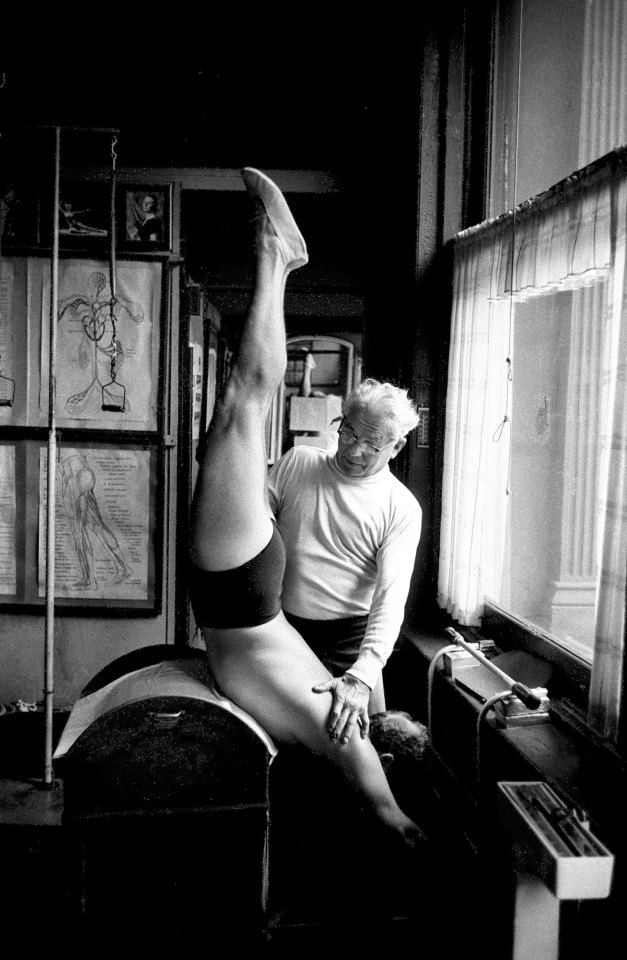
26
Joseph instructing a client in New York City in 1961Credit: Getty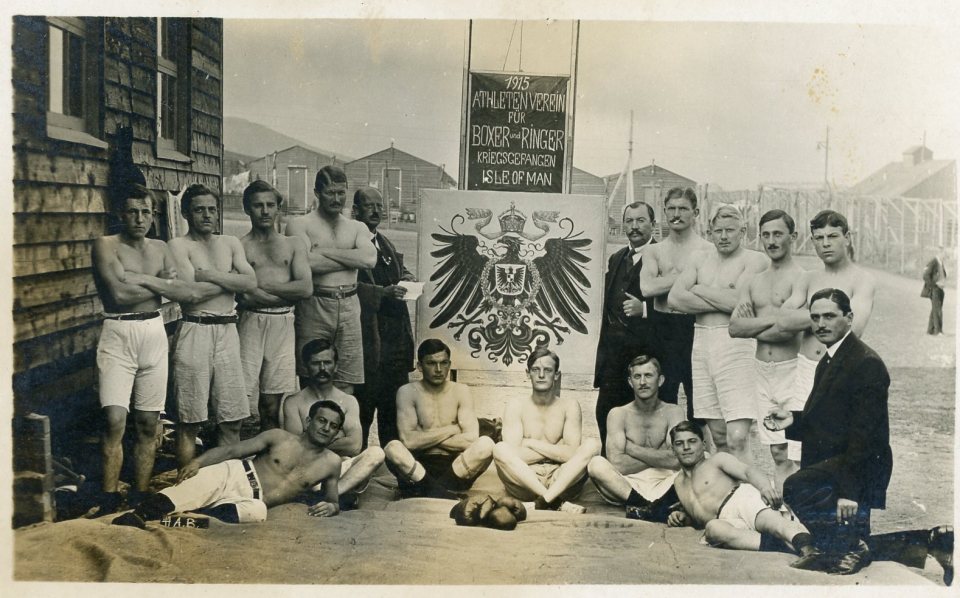
26
The boxing team at Knockaloe in 1915, which Joseph was part ofCredit: www.knockaloe.im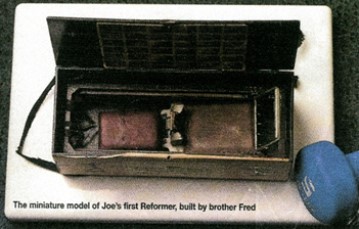
26
A model of Joseph’s first reformer, reminiscent of modern-day machinesCredit: The Knockaloe Charitable Trust
“Living conditions were tough. The men slept on wooden bunks or beds with straw-filled palliasse mattresses and the food was monotonous – potatoes and herring were staples, especially as the war progressed and food supplies were hit by submarine blockades.
“For many, keeping busy was critical to avoid the depression known as ‘barbed wire disease’.”
Joseph got involved with many camp activities, from bone carving and woodwork to serving as a boxing referee.
But his most important work was carried out while helping at the on-site hospital.
The results were remarkable. By the end of the war, many prisoners were in better physical condition than when they had arrived
Alison JonesResearcher
“He helped fellow internees maintain their physical and mental health,” Alison says.
“There are records of patients praising him for his unselfishness, and how Joseph’s training kept people fit during challenging years.
“While there is no direct evidence of structured ‘classes’, German ‘physical culture’ was taught as a continuous part of camp life, and one internee’s granddaughter, who visited years later, recalled how her grandfather did exercises every morning that resembled Pilates-style movements.”
THE PILATES METHOD
AT the time, Joseph referred to his exercise methodology as “contrology”.
“It was the term he used to describe developing control over the body through mindful movement,” Alison says.
“Joseph had the chance to really dig deep into the connection between body, mind and spirit, and his life behind the wire became a time for him to reflect, read and observe.
“Those moments of self-discovery eventually formed the foundation for what we now know as Pilates.”
26
Throughout his life, Joseph developed more than 600 exercisesCredit: Getty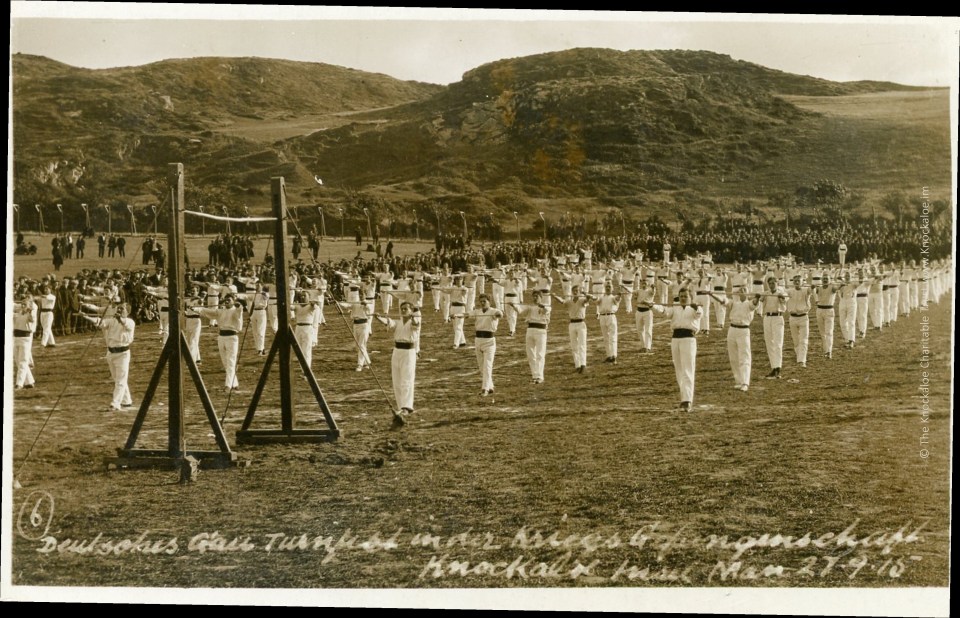
26
A gymnastics display in September 1915 after he arrived at KnockaloeCredit: The Knockaloe Charitable Trust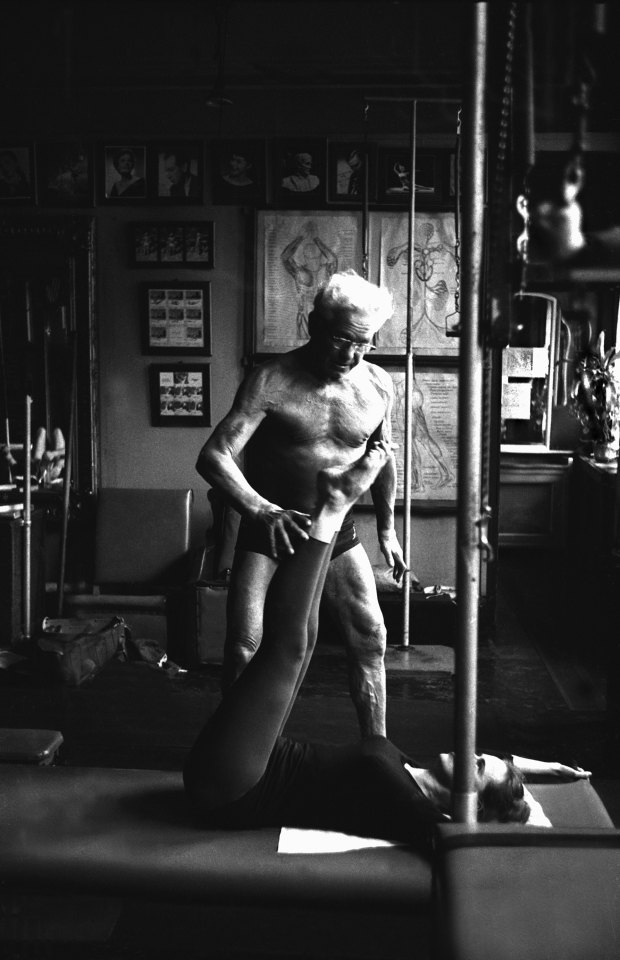
26
The fitness guru used both mats, equipment and machinesCredit: Getty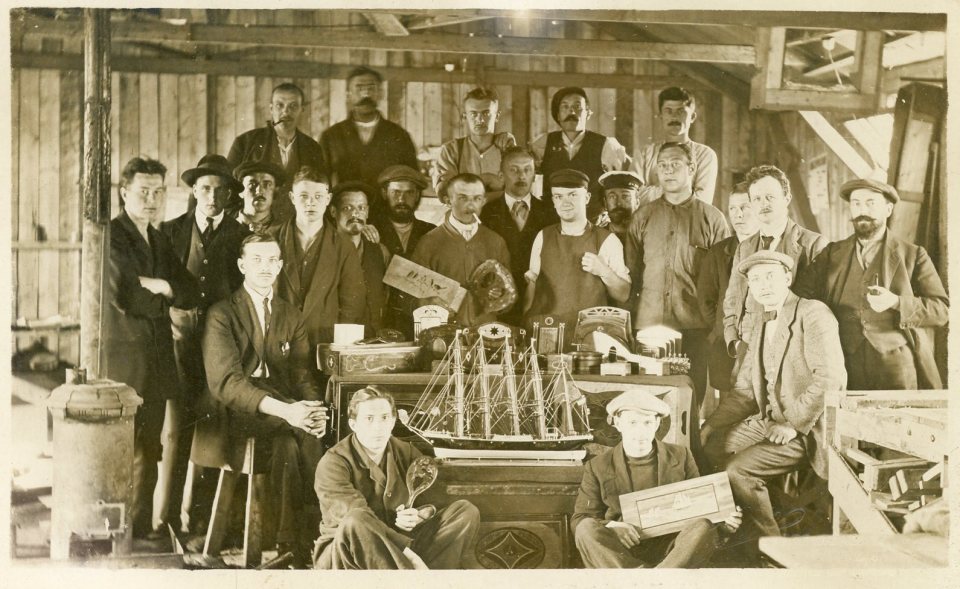
26
Some of the internees in the recreation hut at KnockaloeCredit: www.knockaloe.im
In 1962, Joseph told Sports Illustrated that he drew inspiration from the movements of tailless Max cats, which were “abundant” on the Isle of Man during WW1.
“Despite being underfed, the cats maintained their agility and strength through stretching and fluid movements,” Alison says.
“Joseph was struck by this observation and began to understand the importance of regular stretching and controlled movement for maintaining vitality.
“His time in internment allowed him hours analysing their movements, which led him to develop a series of exercises aimed at keeping muscles limber and active.
I visited the birthplace of Pilates
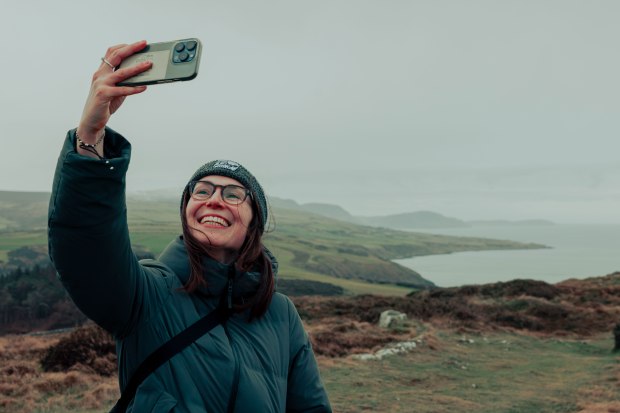
By Alice Fuller, Health Features Editor
I’M not your typical health and wellness writer. I don’t really take supplements, I can’t stand breathwork and you’ll almost never catch me doing a guided meditation.
However, when the opportunity to go on a “wellness weekend” presented itself, I thought, “Why not?”
With a high-stress job and some serious back pain, I could probably do with some relaxation after all.
Imagine my shock when I discovered that instead of a peaceful few days in the New Forest or a chilled out trip to Ibiza, I was off to the Isle of Man – a self-governing British Crown Dependency in the Irish Sea.
I now know it’s a wellness warrior’s dream, with breathtaking scenery, beach saunas and cold plunges, and some of the best stargazing opportunities in the British Isles.
It also happens to be the birthplace of Pilates – where a man named Joseph Pilates (yes, really) developed his “contrology” approach to exercise while interned as a German energy alien during World War One.
It was the perfect place to unwind. For a similar restful wellness weekend on the Isle of Man, why not try…
- Guided walking meditation through a magical glen or plantation with mindfulness teacher, TEDx speaker and author Mike Kewley
- Stargazing and a talk on the island’s dark skies with local astronomer Howard Parkin MBE
- Dinner at the Isle of Man’s only plant-based cafe, VIBE
- A hiking and treasure hunt-themed adventure with IOM Quest
- Breathwork with Kate Bergquist, owner and founder of Soul Adventures, or a yin yoga and relaxation class
- A full moon sauna experience with a hot tub, cold plunge pools, sauna and the Irish Sea at Kishtey Cheh
- A guided sound bath experience with Amy Howse from Soundology
- A Pilates class with Kasey Lach at Reform Wellness Studio
GETTING THERE: Fly from London, Liverpool, Manchester, Birmingham, Bristol, Belfast, Dublin or Edinburgh (easyJet, Loganair).
STAYING THERE: The Mill House.
MORE INFO: visitisleofman.com.
“He demonstrated these to fellow internees, and one later noted that the results were remarkable; by the end of the war, many prisoners were in better physical condition than when they had arrived.”
She adds: “While there’s no direct evidence in the camp records, Joseph himself mentioned using the springs from the metal hospital beds to provide resistance.
“This idea eventually led him to create a miniature version of what he would later call the Reformer – a key piece of equipment in the Pilates method.”
WHAT HAPPENED NEXT?
BY 1915, Joseph returned to England to find work.
“He faced financial struggles, briefly settling in London and working in a sanatorium before using his boxing skills and teaching self-defense to the police,” Alison says.
“Following post-war repatriation back to Germany, Joseph was able to emigrate again in search of a better life, this time to America.
26
Joseph died in October 1967, but his legacy lives onCredit: Getty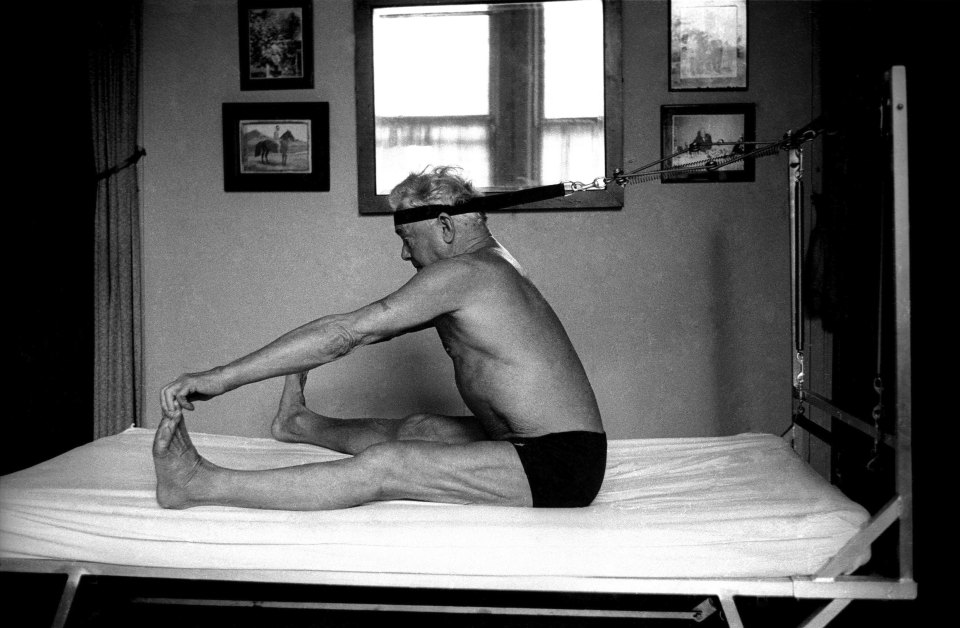
26
His work was guided by the idea of ‘contrology’Credit: Getty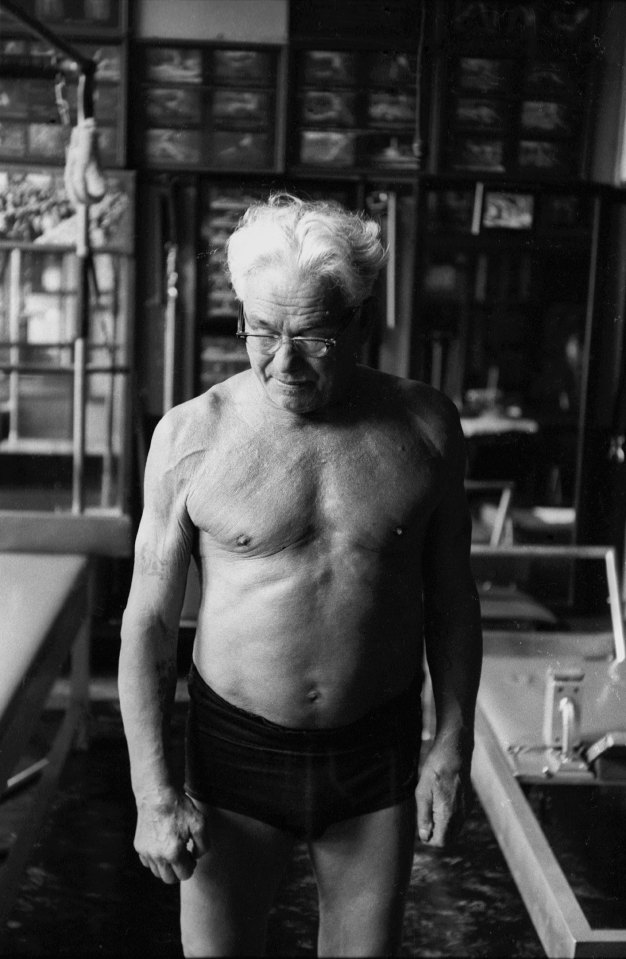
26
It was about developing control over the body through mindful movementCredit: Getty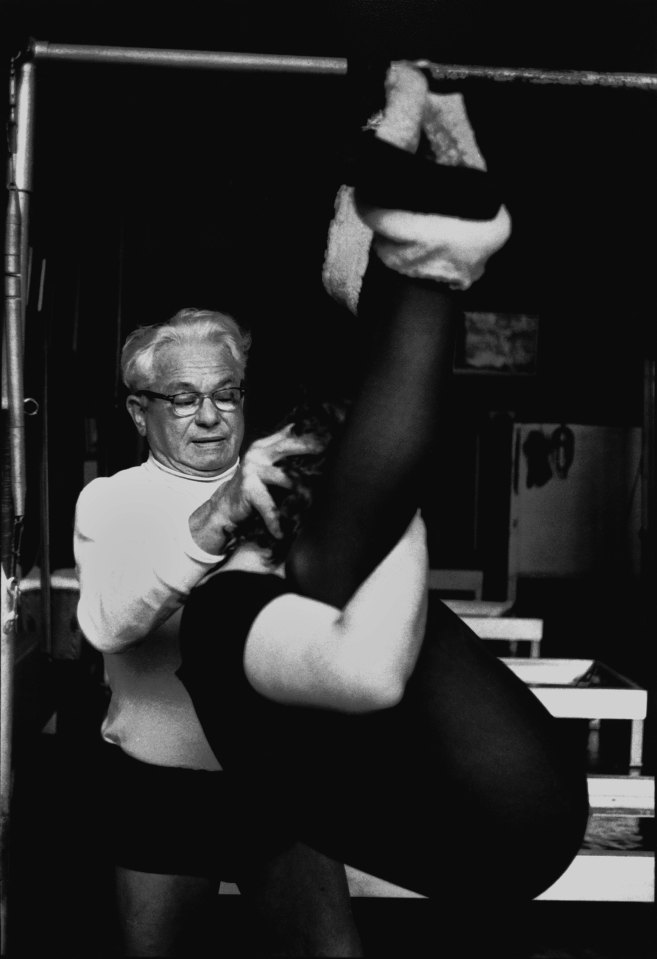
26
He described his move as ‘the squirrel’Credit: Getty
“It was en route in 1926 that he met his future wife, Clara, on a ship travelling to New York.
“There, the couple built their studio teaching ‘Pilates contrology’ and began a new chapter of their lives.”
Joseph went on to design more equipment, including corrective chairs and beds, trapeze tables, head harnesses and ladder barrels.
A GLOBAL PHENOMENON
THE unusual approach to exercise became a core element of many dancers’ training and rehabilitation.
Artists, celebrities and socialites then followed suit.
Joseph, who trained a small number of second generation teachers, died in October 1967, but his legacy lives on.
New studios began opening and formalised teaching training programs started to appear.
26
A Pilates class at Reform Wellness Studio on the Isle of Man in 2025Credit: David Lovelady Photography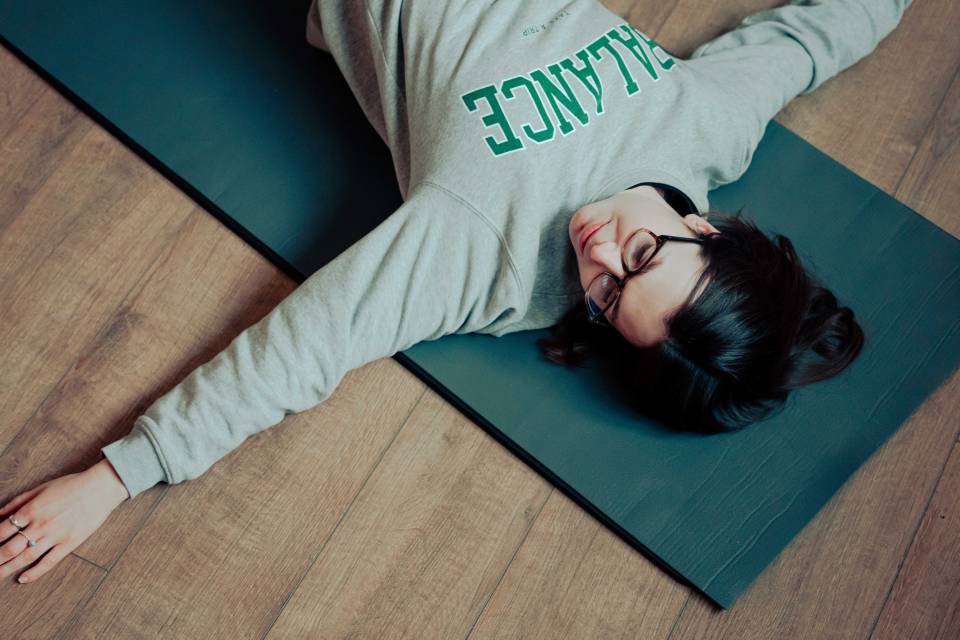
26
Pilates focuses on core stability, strength, flexibility, muscle control, posture and breathingCredit: David Lovelady Photography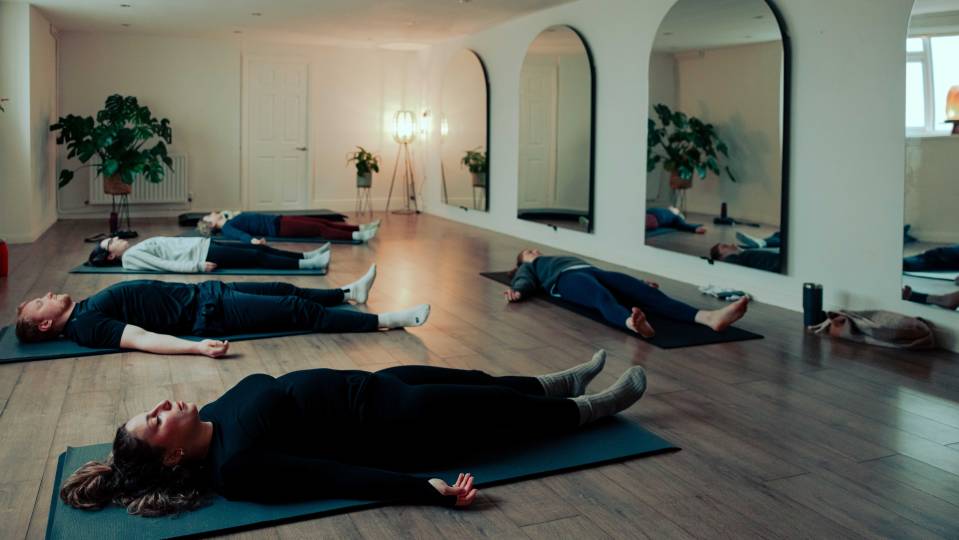
26
Instructor Kasey Lach leading a classCredit: David Lovelady Photography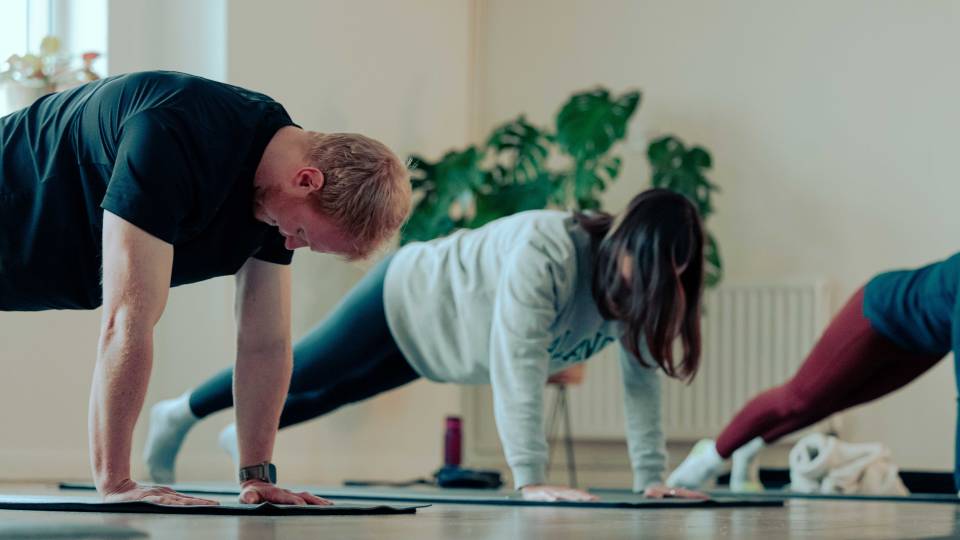
26
Today, there are thousands of Pilates studios worldwideCredit: David Lovelady Photography
The word ‘Pilates’ then entered dictionaries and at-home equipment started being sold in shops and on TV.
Today, there are thousands of Pilates studios worldwide.
Like Joseph’s approach, they teach classes that focus on core stability, strength, flexibility, muscle control, posture and breathing.
It’s popular with some of the biggest names in showbiz – including Selena Gomez, Lady Gaga and Harry Styles – as well as footballers, mums and social media stars.
Celebrities who love Pilates
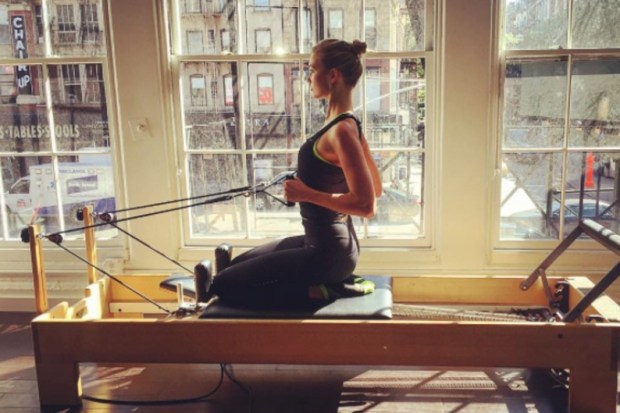
IT seems to be the workout of the moment, with everyone from Kourtney Kardashian to Harry Styles spotted having a go.
- Karlie Kloss
- Meghan Markle
- Selena Gomez
- Kate Ferdinand
- Lindsay Lohan
- Louise Rednapp
- Ekin-Su Cülcüloğlu
- Lucy Fallon
- The entire Kardashian-Jenner clan
- Rochelle Humes
- Hilary Duff
- Lady Gaga
- Kate Hudson
- Ayda Field
- Joan Collins
- Harry Styles
- Margot Robbie
- Cristiano Ronaldo
- Adele
- David Beckham
- Jeremy Clarkson
26
Cristiano Ronaldo using the straps on his reformer bedCredit: Instagram
26
Selena Gomez in action during a reformer Pilates classCredit: Instagram/tmarie247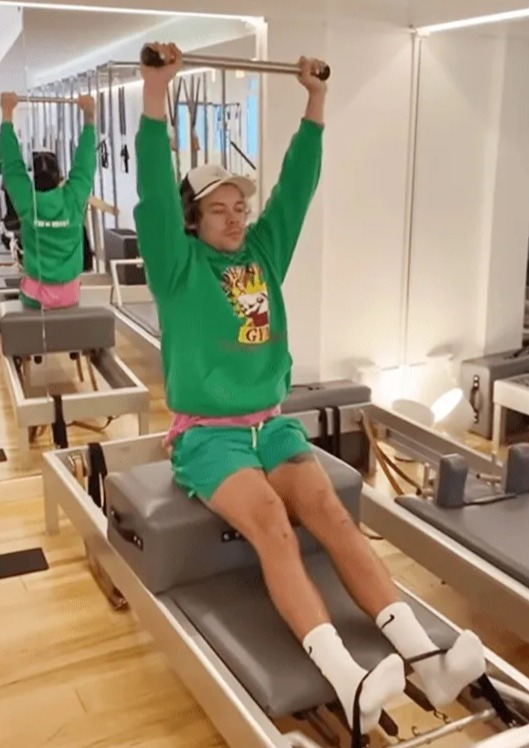
26
Harry Styles working on his Pilates moves in London in 2023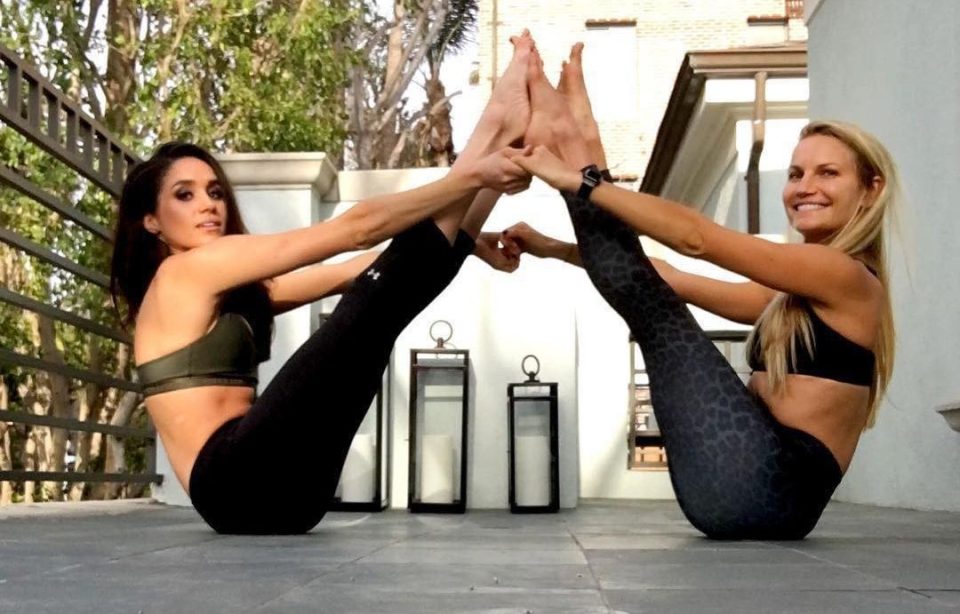
26
Meghan Markle with Pilates instructor Heather DorakCredit: Instagram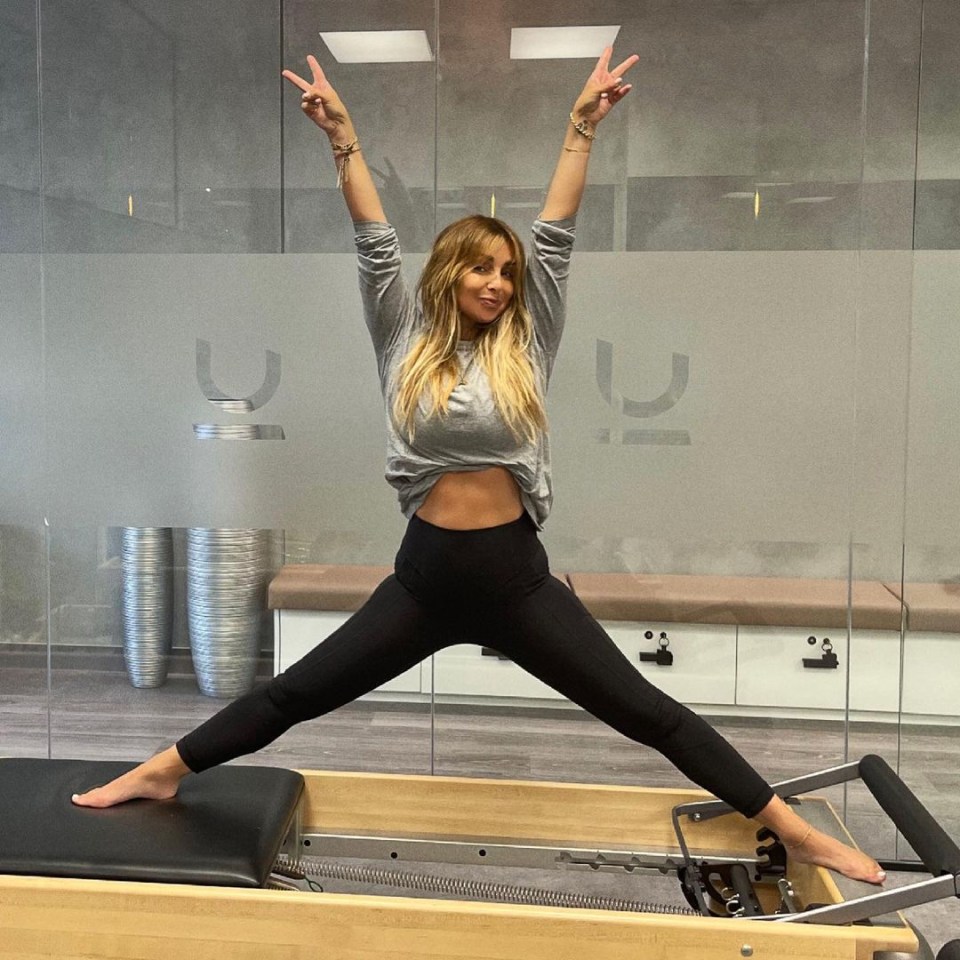
26
Louise Redknapp says she loves Pilates because ‘it’s quick and feels like a proper workout’Credit: Social Media 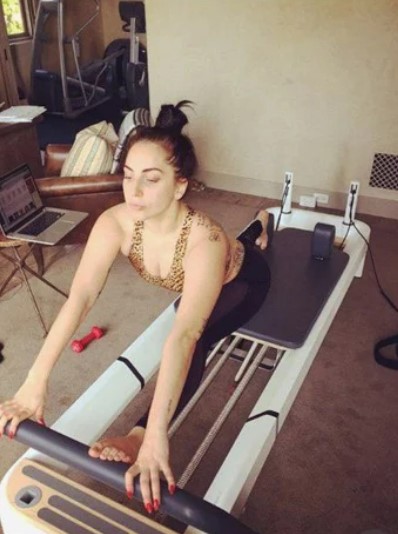
26
Lady Gaga is also said to be a big fanCredit: Instagram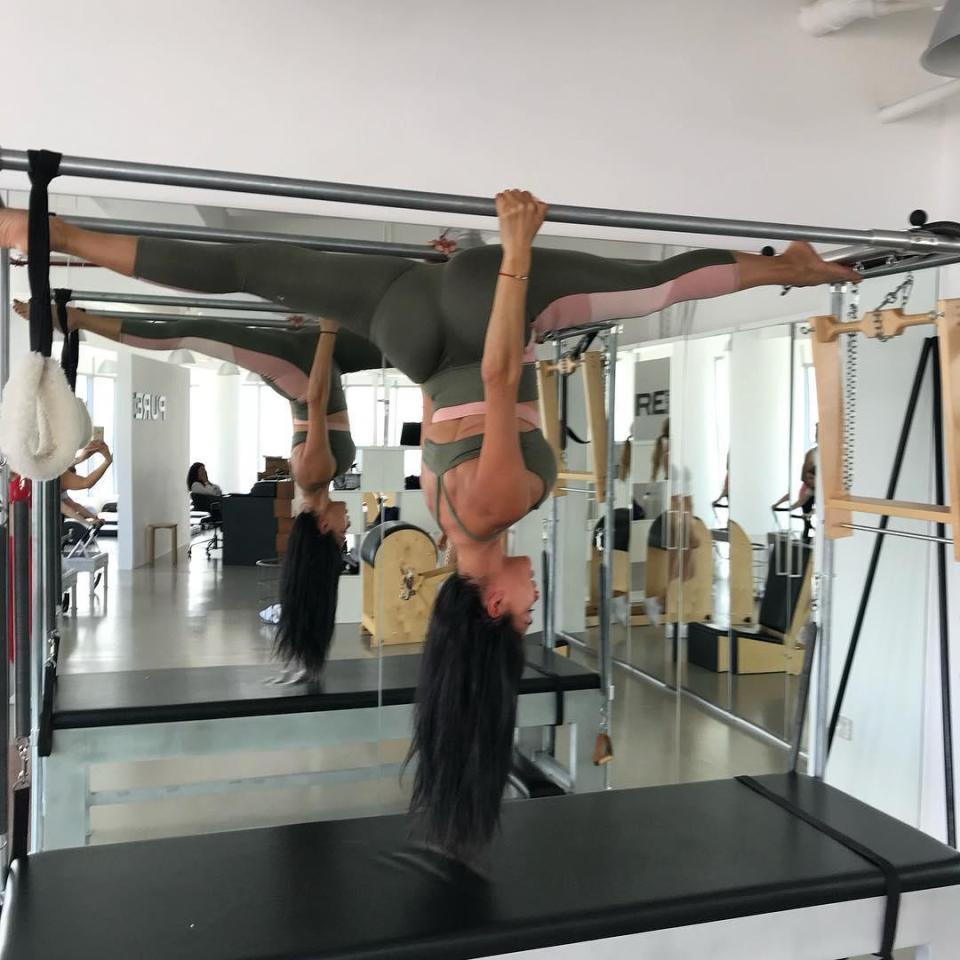
26
Nicole Scherzinger in a mind-boggling Pilates poseCredit: Instagram
